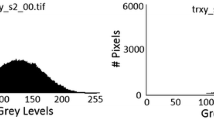Abstract
The marching cubes algorithm (MC) is a powerful technique for surface rendering that can produce very high-quality images. However, it is not suitable for interactive manipulation of the 3D surfaces constructed from high-resolution volume datasets in terms of both space and time. In this paper, we present an adaptive version of MC called adaptive marching cubes (AMC). It significantly reduces the number of triangles representing the surface by adapting the size of the triangles to the shape of the surface. This improves the performance of the manipulation of the 3D surfaces. A typical example with the volume dataset of size 256×256×113 shows that the number of triangles is reduced by 55%. The quality of images produced by AMC is similar to that of MC. One of the fundamental problems encountered with adaptive algorithms is thecrack problem. Cracks may be created between two neighboring cubes processed with different levels of subdivision. We solve the crack problem by patching the cracks using polygons of the smae shape as those of the cracks. We propose a simple, but complete, method by first abstracting 22 basic configurations of arbitrarily sized cracks and then reducing the handling of these configurations to a simple rule. It requires onlyO(n 2) working memory for an×n×n volume data set.
Similar content being viewed by others
References
Artzy E, Frieder G, Herman GT (1981) The theory, design, implementation and evaluation of a three-dimensional surface detection algorithm Comput Graph Image Processing 15:1–24
Baker HH (1989) Building surfaces of evolution: the weaving wall. Int J Comput Vision, 3:51–71
Chen L, Herman GT, Reynolds RA, Udupa JK (1985) Surface shading in the cuberille environment. IEEE Comput Graph Appl 5:33–43
Cline HE, Lorensen WE, Ludke S, Crawford CR, Teeter BC (1988) Two algorithms for the three-dimensional reconstruction of tomograms. Med Phys 15:320–327
Clay RD, Moreton HP (1988) Efficient adaptive subdivision of Bézier surfaces. Proceedings of the Eurographics'88 Conference, North-Holland, Amsterdam, pp 357–371
Durst MJ (1988) Additional reference to “marching cubes”. Comput Graph 22:72–73
Fuchs H, Levoy M, Pizer SM (1989) Interactive visualization of 3D medical data. Computer 22:46–51
Gordon B, Udupa JK (1989) Fast surface tracking in threedimensional binary images. Comput Vision Graph Image Processing 29:196–214
Herman GT, Liu HK (1979) Three-dimensional display of human organs from computed tomograms. Comput Graph Image Processing 9:1–21
Kaufman A (1990) Volume visualization. IEEE Computer Society Press, Los Alamitos, Calif.
Lorensen WE, Cline HE (1987) Marching cubes: a high resolution 3D surface construction algorithm. Comput Graph 21:163–169
Muller H and Stark M (1993) Adaptive Generation of surfaces in volume data. Visual Comput 9:182–199
Ning P, Bloomenthal J (1993) An evaluation of implicit surface tilers. IEEE Comput Graph Appl 13:33–41
Nielson GM, Hamann B (1991) The asymptotic decider: resolving the ambiguity in marching Cubes. Proceedings of Visualization'91 Conference, San Diego, Calif. pp 83–91
Schroeder WJ, Zarge JA and Lorensen WE (1992) Decimation of triangle Meshes. Comput Graph 26:65–70
Sobierajski L, Kaufman A, Cohen D, Yagel R, Acker D (1993) A fast display method for volumetric data. Visual Comput 10:116–124
Trivedi SS, Herman GT, Udupa JK (1986) Segmentation into three classes using gradients. IEEE Trans Med Imaging 5:116–119
Turk G (1992) Re-tiling of polygonal surfaces. Comput Graph 26:55–64
Wilhelms J, Van Gelder A (1990) Topological considerations in isosurface generation. Comput Graph 24:79–86
Wilhelms J, Van Gelder A (1992) Octree for faster isosurface generation. ACM Trans Graph 11:201–227
Udupa JK, Hung HM (1990) Surface versus volume rendering: a comparative assessment. Proceedings of the First Conference on Visualization in Biomedical Computing. pp 83–91, IEEE Computer Society Press, Los Alamitos, Calif.
Author information
Authors and Affiliations
Rights and permissions
About this article
Cite this article
Shu, R., Zhou, C. & Kankanhalli, M.S. Adaptive marching cubes. The Visual Computer 11, 202–217 (1995). https://doi.org/10.1007/BF01901516
Issue Date:
DOI: https://doi.org/10.1007/BF01901516




